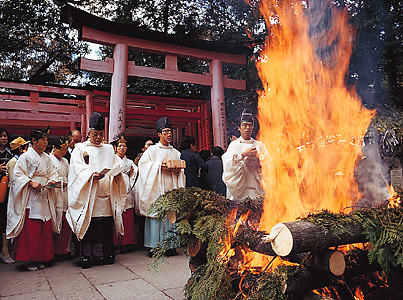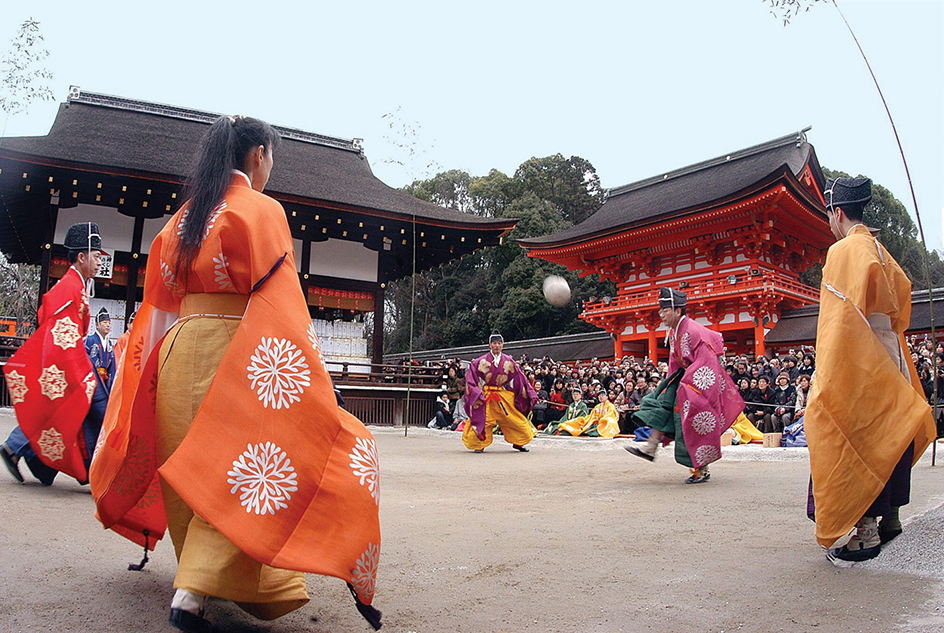Shinto, << SHIHN toh, >> is the oldest surviving religion of Japan. The word Shinto commonly is understood as meaning the way of the gods. In the past, however, it meant something close to the realm of the gods or the condition of the gods. Shintoists worship many deities (gods and goddesses), called kami. Kami are the basic force in living beings and in nature, including mountains, rivers, rocks, and trees. Shintoists also consider kami to be the basic force in such processes as creativity, disease, growth, and healing.

Shinto emphasizes group rituals. Modern Shinto does not have an elaborate philosophy. In the past, however, numerous works were written about intellectual aspects of kami, their actions, and their impact on individuals, society, and the universe. Unlike many religions, Shinto does not stress life after death. But Shintoists commonly believe that dead people continue to inhabit the world in a spiritual, invisible form near their living relatives.
Most Japanese practice some Shinto rituals related to the seasons or to major life events. Many worship at small shrines in their homes. Roadside shrines dedicated to certain kami are also common. Some public shrines have many buildings and gardens. Individual worshipers recite prayers and offer gifts of rice cakes, flowers, and money to the kami.
On some occasions, Shinto priests lead ceremonies called matsuri. One of the most important matsuri is the Great Purification Ceremony. It consists of a confession of sins committed by individuals and by the nation as a whole, followed by a request that the kami remove the impure conditions caused by these sins. Other ceremonies deal with such basic goals as long life, peace, abundant harvests, and good health. In general, matsuri are lively festivals dedicated to local gods.
No one knows when or how Shinto began. Scholars believe that ancient Shinto was a combination of local cults (religious groups) from the Japanese islands and from mainland Asia. The term Shinto came to refer to the whole of kami-related religion around the A.D. 1400’s to 1500’s. Shintoists have always worshiped the kami through nature. Shinto stories appear in the Nihongi (Chronicles of Japan) and the Kojiki (Record of Ancient Matters), both written in the late A.D. 600’s and early 700’s. These stories tell how the kami created the world and established customs and laws. According to Shinto belief, the sun goddess was the ancestor of Japan’s imperial family.
Beginning about the A.D. 500’s, Buddhism and Confucianism began to influence Shinto. Buddhist ceremonies were used for funerals and memorial services. Under the influence of Confucianism, Shinto developed such moral standards as honesty, kindness, and respect for elders and superiors.
In the late 1800’s, the Japanese government invented State Shinto, which stressed patriotism and the divine origins of the Japanese emperor. After Japan’s defeat in World War II in 1945, the emperor denied that he was divine, and the government abolished State Shinto.
During the 1800’s and 1900’s, hundreds of New Religions became popular in Japan. Many of these were Shinto denominations that centered around the teachings of a particular person. Most promote group worship, charity work, and the healing of body and mind.

See also Japan (Religion) .
